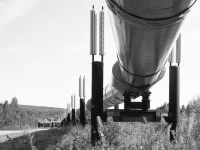Throughout time, there has always been speculation that human activity has had an impact on the environment, and the interaction between people and their surroundings is inevitable. It wasn’t until scientists noted the relationship between rising temperatures and carbon dioxide emissions that environmental protection entered the political arena; a partisan one nonetheless. John Tyndall and Svante Arrhenius’s experiments in the late 1800s suggested a relationship between carbon dioxide emission and temperature levels. Guy Stewart Callendar noted the rise in temperature after the United States’ Industrial Revolution in the early 1900s. In the United States, environmental regulation is a hotly contested and divisive issue, with many still convinced that the overwhelming amount of evidence pointing towards human activity being the fundamental cause of global warming is merely a cycle in the Earth’s weather patterns.
The Environmental Protection Agency (EPA) was created under the Nixon Administration in 1970. Shortly after, two pieces of legislation passed that addressed the issue of global warming being caused by humans by allowing the EPA to set standards on the amount of pollutants being released: the Clean Air Act of 1970 and the Clean Water Act of 1972. These policies were popular and accepted across the aisle. Soon to follow were the National Environmental Policy Act of 1970—requiring government to conduct environmental impact studies before starting major construction—and the Endangered Species Act of 1974—which protects endangered and at-risk species. While the courts continue to protect, uphold, and defend these regulations, no major environmental policy has been made since, regardless of evidence unfolding about the harmful effects of greenhouse gases.
While warning signs continue to present themselves, President Donald J. Trump’s administration rolls back regulations.
While warning signs continue to present themselves, President Donald J. Trump’s administration rolls back regulations. To name a few, Trump has significantly weakened Obama-era policies on oil and gas companies releasing methane, automobile fuel economy rules, protecting endangered and at-risk species, toxic air pollution standards, and regulations on offshore drilling. The president has even pulled out of the Paris Climate Agreement—an agreement between 194 countries to reduce their greenhouse gas emissions— thereby dropping the United States’ role as a leader in actively curbing global warming. With midterm elections right around the corner, views on environmental policy play a vital role in the eyes of the voters.
In particular, environmental policy is a hot topic in California’s elections. California has faced numerous disasters in preceding years including droughts and wildfires. Democratic Governor Jerry Brown has criticized the Trump administration’s rollback of automobile emission standards and offshore drilling. A Public Policy Institute of California survey suggests that 62 percent of California’s citizens believe that global warming is very much so happening, and strict environmental policy is necessary.
In Florida, incumbent Republican Governor Rick Scott is being criticized for his cuts to water management spending. Experts and scientists have pointed to these actions as a cause in blue-green algae and red tide outbreaks. This has caused harmful nutrients to enter the soil and wetlands, leading to dead fish washing up on the beaches; affecting both the fishing and tourism industries. In addition, the rising sea levels have caused flooding in Miami, making insurance both more expensive and harder to attain. Miami Beach Mayor Philip Levine has prepared for the rising levels by overhauling the storm drainage system and improving infrastructure, making him a viable democratic candidate for the governor race.
These midterm elections could be vital for enacting environmental policy and changing the fate of both the nation and the world for generations to come.
Environmental policy is also on the minds of Northeastern University students. Louiza Wise is a third-year Environmental Engineering student who said she will be voting absentee in Ohio. “Overall increasing regulations and stopping Trump’s roll back on regulation is something I would like to see addressed,” she said in an interview. In particular, Wise would like to see an “increase in MPG standards on cars, recycling and compost initiatives nationwide, and park and land protection.” Second-year chemical engineering student Kelsey Walak is voting in Massachusetts and would like to see more funding towards research in renewable energy. “The amount of carbon dioxide being released needs to be addressed,” she stated. Neither Massachusetts nor Ohio have particular ballot questions pertaining to the environment, but both Walak and Wise have high hopes for their elected officials.
These midterm elections could be vital for enacting environmental policy and changing the fate of both the nation and the world for generations to come. The evidence is clear that the Earth is drastically changing, and regardless of which candidates you support, protecting the Earth must be a priority.





